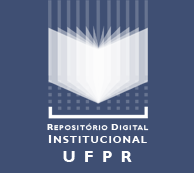ADUBAÇÃO NITROGENADA NA PRODUTIVIDADE E COMPOSIÇÃO QUÍMICA DO CAPIM MOMBAÇA NO PRIMEIRO PLANALTO PARANAENSE
Resumo
A grande maioria do rebanho brasileiro de bovinos é criado a pasto e apresenta baixa produtividade, dado pelo baixo suprimento e qualidade das pastagens. O objetivo foi avaliar a produtividade e composição química do Capim Mombaça (Panicum maximum) sob doses crescentes de nitrogênio. O experimento foi conduzido na Estação Experimental do Cangüiri localizada em Pinhais-PR, pertencente à Universidade Federal do Paraná. O delineamento experimental foi o de blocos ao acaso com quatro repetições e cinco tratamentos (0, 85, 170, 320 e 510 kg de N ha-1) aplicados a lanço em novembro de 2007. Os parâmetros avaliados foram produtividade de matéria seca (MS), teor de clorofila na folha e concentrações totais de N e C. A pastagem obteve incrementos na produção de MS, teor de clorofila e concentração total de N. A adubação nitrogenada propiciou incrementos lineares na produção de MS e PB, variando de 585 a 10.310 e de 45 a 1.279 kg ha-1, após 85 e 161 dias da aplicação, respectivamente. Os incrementos na produtividade de matéria seca foram lineares com 19 kg de MS para cada kg de N aplicado. Cada kg de N também propiciou as seguintes variações lineares: 0,5x10-5 mg kg-1 de N - teor de clorofila, 0,015 g kg-1 de N - concentração de N; 2,52 kg kg-1 de N - PB; 7,98 kg kg-1 de N - C total, e -0,025 - relação C/N. A adubação nitrogenada aumentou a produtividade, bem como as concentrações de PB e clorofila, além de diminuir a relação C/N.
Palavras-chave
Texto completo:
PDF (English)DOI: http://dx.doi.org/10.5380/rsa.v10i4.14915




